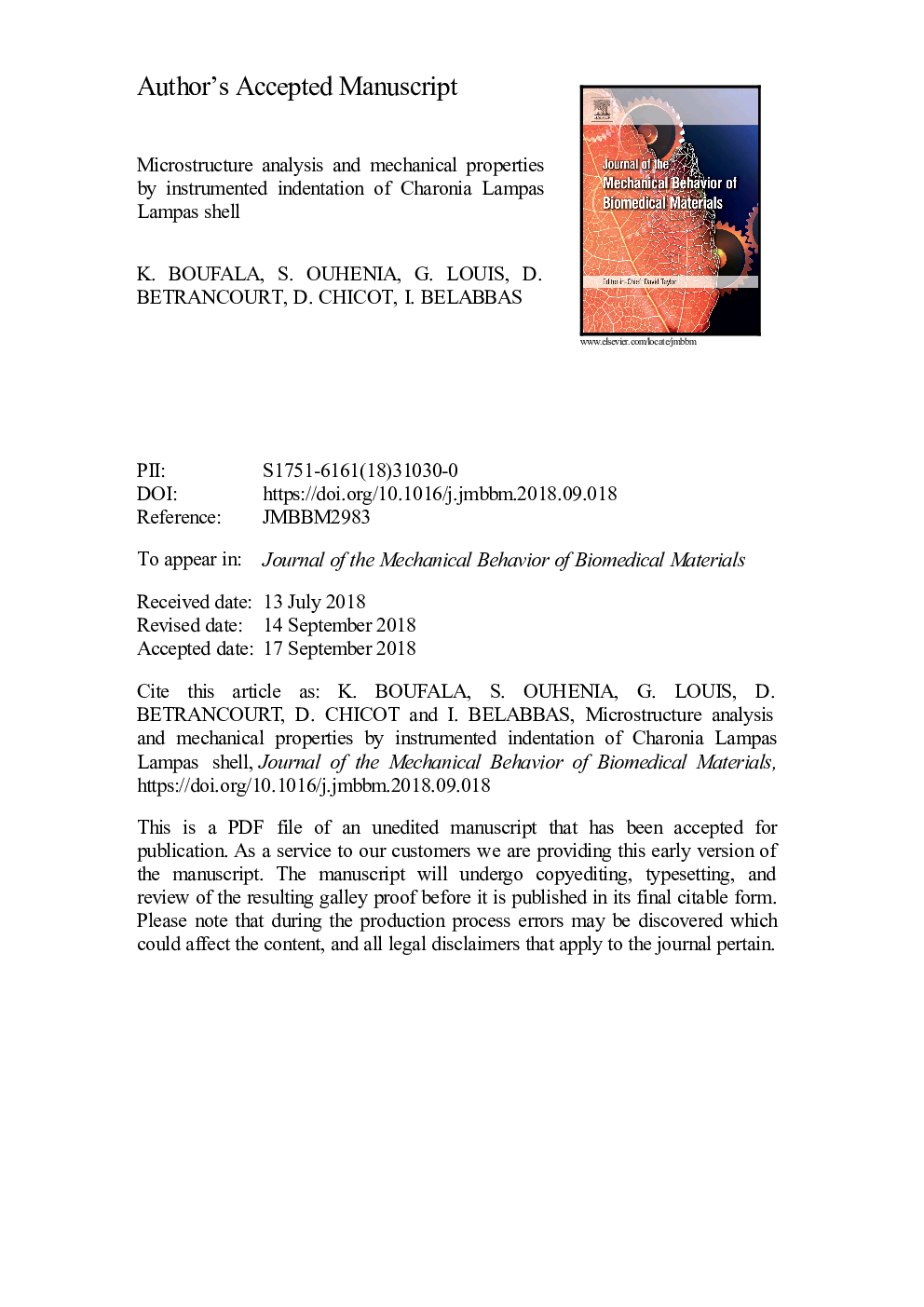| Article ID | Journal | Published Year | Pages | File Type |
|---|---|---|---|---|
| 11027718 | Journal of the Mechanical Behavior of Biomedical Materials | 2019 | 34 Pages |
Abstract
Scanning electron microscopy, X-ray diffraction and Fourier transformed infrared spectroscopy have been used to characterize the microstructure and instrumented microindentation for the determination of the mechanical properties of Charonia Lampas Lampas shell. Both elastic modulus and hardness are found to be dependent on the texture of the three distinct layers. From the analysis of load-depth curves, the shell exhibits small viscoelastic behaviour at low indentation loads and mainly elastoplastic behaviour at higher loads. These phenomena were attributed to the influence of the organic matter present in the shell. Both elastic modulus and hardness are found to be load-dependent in each layer in relation to their microstructure and, accordingly, to the anisotropy of the predominant mineral part. At a macroscopic scale, this tendency is explained by using a rule of mixture and jointly by the anisotropy of the aragonite. The Bull and Page model is subsequently applied to the hardness variation in order to compute the macrohardness which is the characteristic hardness number of a material and the hardness parameter related to the indentation size effect. This model describes well the experimental results for the relative higher depths, and deviates for the small depths due to the effect of the viscoelastic behaviour which then requires a more appropriate model to describe this phenomenon.
Related Topics
Physical Sciences and Engineering
Engineering
Biomedical Engineering
Authors
K. Boufala, S. Ouhenia, G. Louis, D. Betrancourt, D. Chicot, I. Belabbas,
